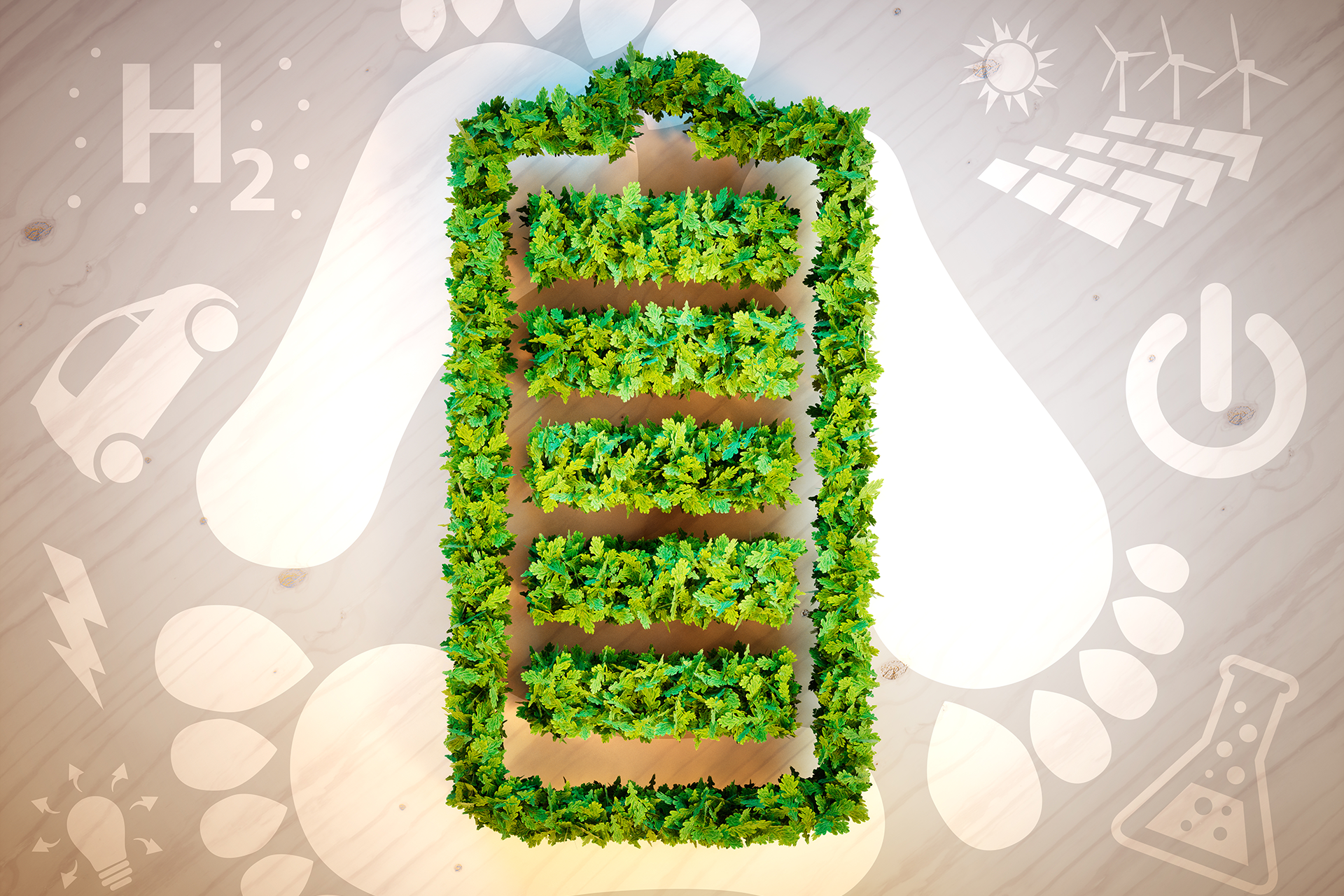
THREE MAIN REASONS TO USE LITHIUM IRON PHOSPHATE BATTERIES FOR STORAGE
Which battery cells are best suited for battery storage systems? At RCT Power, we have utilized lithium iron phosphate, also known as LiFePO4 or LFP, for our battery units from the beginning. There are three main reasons for using lithium iron phosphate:
1. Durability and performance of LiFePO4 battery storage
In order to compare the durability of batteries you look at their charge cycles. How often can the battery be recharged before the capacity drops significantly?
A charge cycle is the process of charging and discharging a battery. We distinguish between full and partial charge cycles. For a full charge cycle, the battery is discharged to 0 % residual capacity followed by a subsequent charge to 100 % capacity. Partial charge cycles are characterized by an incomplete discharge of the battery. When you calculate the overall cycle numbers for a battery, the partial charge cycles can be summed up to full-cycle equivalents.
Important parameters that determine the cycle life of the battery storage are the Depth of Discharge (DoD), the State of Charge (SoC) and the ambient temperature at the installation site. SoC and DoD values indicate the states of charge and discharge of a battery in percent to its total capacity.
For self-consumption optimized storage systems, the battery will be charged and discharged around 250 times a year. RCT Power’s lithium iron phosphate battery storage systems can be charged and discharged around 5000 times. Beyond that, the battery can still be charged efficiently, but a slight loss of capacity is to be expected. A lead-acid battery, such as a car battery, in comparison, has between 300 and 500 full charging cycles.
The performance of the battery also plays a significant role during the charging and discharging process. The LiFePO4 battery can be charged and discharged at high power, which is especially beneficial when used with backup power systems or during changing weather conditions.
The efficiency η is a dimensionless value. For batteries, η is determined as the ratio of energy supplied to energy extracted. In practice, you cannot utilize the full charging energy of the battery, as no energy storage system provides the ideal efficiency of 100 %. The efficiency of a LiFePO4 battery can range between 93 and 98 %, which is very high. Compared to other battery technologies lithium iron phosphate-based batteries not only have higher charge cycle numbers but also a higher energy conversion efficiency.
Batteries have a so-called “design lifetime“, which is independent of the charging cycles. Here LFP-based batteries are superior to other technologies. Lithium iron phosphate batteries used by RCT Power last around 15—20 years. This durability is economically sensible and also beneficial for the environment as batteries are built with rare raw materials. This connects us to our second argument in favour of lithium iron phosphate batteries: environmental compatibility.
2. Environmental compatibility of lithium iron phosphate battery storage
Let’s have a look inside a battery: a battery consists of two electrodes and the electrolyte. The negative anode is usually made of graphite, the positive cathode often consists of metal oxides of various combinations of cobalt and other metals (Lithium Nickel Cobalt Aluminum Oxide (LiNiCoAlO2) — NCA, Lithium Nickel Manganese Cobalt Oxide (LiNiMnCoO2) — NMC, Lithium Cobalt Oxide (LiCoO2) — LCO, etc.) or Lithium Iron Phosphate (LiFePO4) — LFP.
There are only very few cobalt-free lithium-ion batteries; lithium iron phosphate batteries are one of them. They also do not contain other toxic heavy metals like lead and nickel, which are commonly used in other batteries. Lithium iron phosphate, in contrast, is a naturally occurring mineral. Therefore, lithium iron phosphate-based batteries are considered to be safe, not toxic and of low environmental impact.
An equally important aspect: health and safety precautions for miners in cobalt mines are often very limited or even non-existent, and the impact of mining on the environment is often not considered properly.
Giving up on controversial and toxic raw materials such as cobalt for storage batteries makes lithium iron phosphate batteries the prime choice for energy storage. They combine low ecological impact with economic benefits.
3. Safe battery technology
The thermal and chemical stability of LFP battery storage systems is superior to those based on cell technologies made with other cathode materials. They provide better safety characteristics, especially concerning potential fire hazards caused by improper overcharging or short circuit conditions.
The lower energy density of a lithium iron phosphate cell provides additional fire protection. The Fe-P-O bond of the cathode material in LFP cells is stronger than the bond of the oxides used in other cells. The cells will withstand high temperatures without decomposing. Also temperatures ( > 400 °C) required to release the oxygen from this bond and burn the cathode or cause a thermal runaway will not be reached, making LFP batteries in effect incombustible. With these advantages they are considered to be intrinsically safe.
A high-quality battery management system, as provided by RCT Power, will reduce thermal loads on the battery storage system to a minimum.
From today’s point of view, lithium iron phosphate-based batteries are one of the safest battery technologies.
Quick Digested Summary: Lithium iron phosphate battery storage
Currently, lithium iron phosphate batteries are the “state of the art” for solar energy storage. They feature a long service life and high efficiency. Lithium iron phosphate battery storage systems are particularly safe and environmentally friendly.

